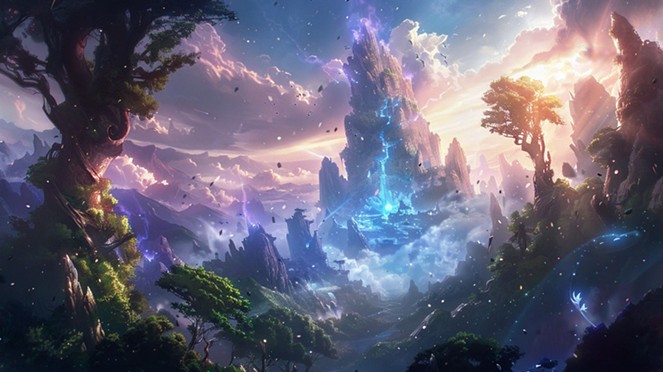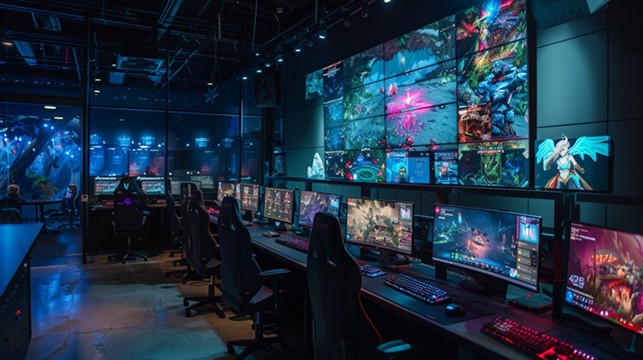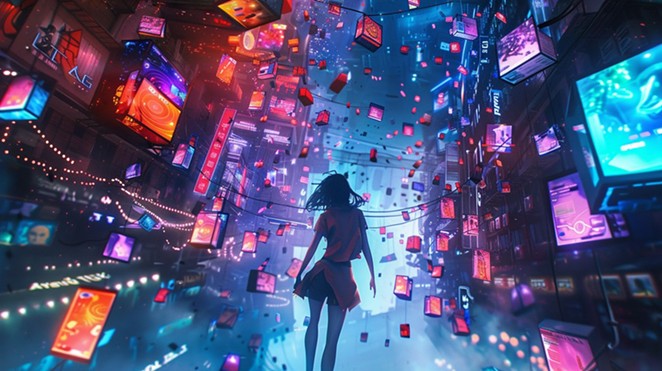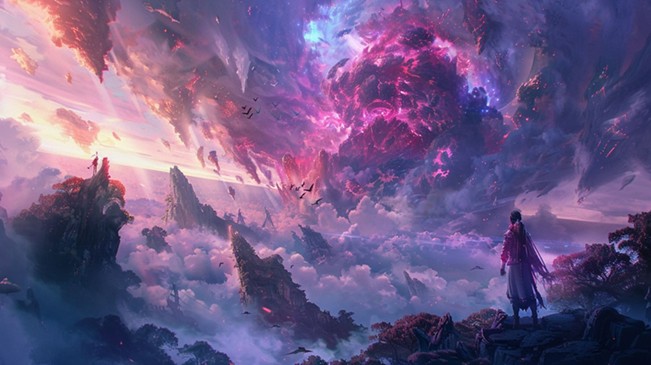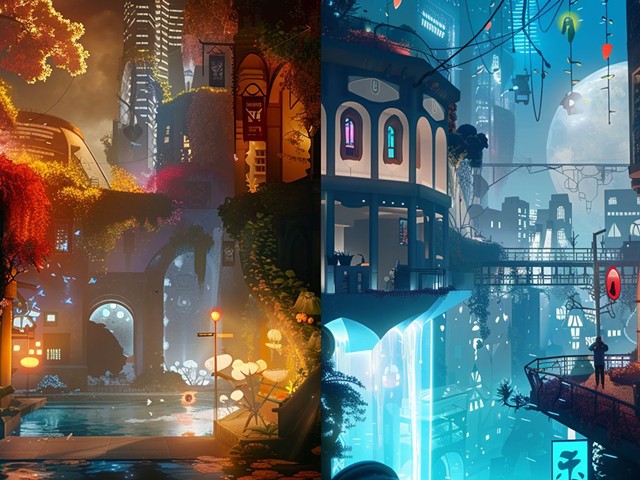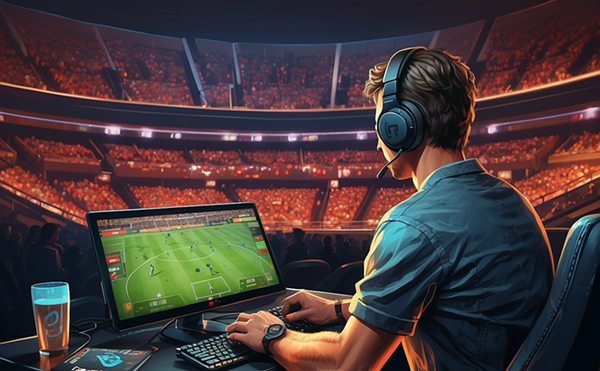League of Legends, developed and published by Riot Games, is a popular multiplayer online battle arena (MOBA) game available on Microsoft Windows. Its gameplay modes include the famous Summoner's Rift, requiring strategic thinking and quick reflexes to conquer opponents.
This highly immersive game boasts a diverse range of characters and abilities, ensuring an engaging experience for every player.
Developer and Publisher
Riot Games stands as both the developer and publisher behind the popular multiplayer online battle arena game, League of Legends. With roots deep in the gaming community since its release, Riot Games has managed to carve out a significant position for itself by not only creating League of Legends but also by expanding its universe through various other games like Legends of Runeterra, Valorant, and Teamfight Tactics.
The company's influence stretches across 12 regional leagues around the globe, showcasing their global reach and commitment to delivering engaging experiences.
Beyond just developing games, Riot Games celebrated a decade of League of Legends in 2019 by announcing several new projects related to this iconic IP. This move signifies their dedication to evolving within the esports and gaming industry while continuing to cater to an ever-growing audience eager for more content connected with the ever-popular world of League of Legends.
Release Date and Platforms
League of Legends made its grand debut on October 27, 2009. This game quickly set a new standard for free-to-play games, offering its rich content without a price tag. Players with computers running Microsoft Windows or macOS can jump into the action, experiencing everything League of Legends has to offer.
This accessibility contributed significantly to the game's widespread popularity. By making it available on two major computer platforms, League of Legends ensured that a vast number of players across the globe could participate in its multiplayer online battle-arena (MOBA) gameplay without needing specialized hardware.
Genre and Game Modes
After exploring its release and availability, one must recognize that League of Legends stands out in the gaming world for its genre and available game modes. As a multiplayer online battle arena (MOBA) game, it creates an immersive experience where strategy and quick decision-making are key.
Players engage in intense battles on various maps, with Summoner's Rift being the primary arena. Here, two teams of five aim to destroy each other's Nexus while protecting their own.
League of Legends doesn't stop at just one way to play; it offers several game modes to suit different player preferences. ARAM (All Random, All Mid) provides a fast-paced environment where everyone is assigned random champions on a single lane map, focusing purely on combat.
For those looking for a strategic challenge without direct control over champions, Teamfight Tactics introduces an auto battler mode where players strategize to build powerful teams to outlast their opponents in automated fights.
System Requirements and Input Methods
Moving from the exciting variety of game modes in League of Legends, we next explore what it takes to actually run this iconic game on your system. Knowing if your computer can handle League of Legends and understanding how you'll interact with the game are crucial steps before getting started. Here's a straightforward look at the requirements and input methods:
- Operating Systems: League of Legends demands either Windows or macOS to function. This ensures a wide range of players can access the game, whether they're using a brand new gaming PC or an older laptop.
- RAM Needs: Minimum requirements include 4GB RAM. This amount allows your computer to process the game's operations smoothly, minimizing lag during gameplay.
- Processor Specs: A 3 GHz processor is required at minimum to play League of Legends. This speed is necessary to manage the real-time calculations and decisions happening in every moment of gameplay.
- Sound Card Compatibility: The game needs a DirectX compatible sound card for audio output. Good quality sound helps players immerse themselves fully into the chaotic battles and lush environments of Runeterra.
- Input Methods - Keyboard and Mouse: The primary way players interact with League of Legends is through keyboard and mouse controls. Players use them for character movement, executing abilities, navigating menus, and communicating with teammates.
- Game Controllers for Wild Rift: Apart from the classic PC setup, Riot Games introduces an alternative with League of Legends: Wild Rift, allowing players to use game controllers for this version tailored to consoles and mobile platforms.
Detailed Gameplay of League of Legends
The detailed gameplay of League of Legends involves strategic real-time battles on various maps with a focus on teamwork, positioning, and resource management. To learn more about the exciting in-game mechanics and strategies, read on!
Overview of Gameplay Mechanics
League of Legends offers fast-paced, strategic gameplay that keeps players engaged. Players control unique champions with individual abilities and work together in teams to destroy the enemy's Nexus.
The game's isometric perspective provides a clear view of the battlefield, while its real-time strategy elements demand quick decision-making. Players earn gold by defeating enemies and destroying structures, using it to purchase powerful items that enhance their champion’s abilities.
In addition, League of Legends features an ever-changing meta-game characterized by regularly updated content such as new champions and balance adjustments.
The game mechanics are easy to grasp but challenging to master, making every match a dynamic experience full of surprises. From choosing the right champion for one’s playstyle to navigating the intricately designed Summoner’s Rift map, each aspect requires careful consideration and skillful play.
Explanation of Summoner's Rift
Summoner's Rift serves as the central battleground for League of Legends, providing a dynamic and strategic environment. This iconic map offers a balanced playing field, with three distinct lanes and an expansive jungle area for tactical maneuvering.
Each team aims to navigate these lanes, overcome various structures, and secure crucial resources in their quest to destroy the enemy Nexus. The intricate design of Summoner's Rift underpins the competitive gameplay experience in League of Legends.
With careful attention to detail, Summoner's Rift features consistent updates to ensure fair and engaging gameplay. Its ever-evolving landscape is meticulously tailored towards fostering diverse strategies while offering a familiar yet challenging realm for players.
As teams embark on their journey through this meticulously designed battlefield, they must navigate not only the complexities of the map but also the evolving dynamics that shape each match.
Other Game Modes
League of Legends also offers various other game modes, providing players with diverse ways to experience the game. These modes include:
- ARAM (All Random All Mid): This mode randomly assigns champions to players who then battle it out on a single lane map. It is known for its fast-paced and action-packed gameplay.
- Teamfight Tactics: In this mode, players compete in an auto-battler style game where they draft and position champions on a board to fight against other players' teams.
- One for All: Players can select the same champion, resulting in chaotic battles as teams face off with identical lineups.
The Origins and Development of League of Legends
League of Legends was developed by Riot Games, with the pre-release development involving extensive input from Steve 'Guinsoo' Feak. Post-release, ongoing improvements and expansions have been meticulously tailored to enhance the gaming experience for players worldwide.
Pre-release Development
Before the official launch of League of Legends, Riot Games founders organized a DotA tournament at the University of Southern California to scout for potential talent. This initiative served as a pivotal moment in the game's development, ultimately leading to its creation as a spiritual successor to Defense of the Ancients (DotA), an influential mod for Warcraft III.
Following this, League of Legends was announced in October 2008 and saw its North American launch take place in October 2009.
Post-release Development and Improvements
Riot Games has continually enhanced the League of Legends experience by introducing various themed in-game events, such as Lunar Revel, Great Hunt, and Urf Day. Additionally, Riot has expanded its portfolio with titles like Legends of Runeterra, Teamfight Tactics, Valorant, Wild Rift on different platforms.
The company's commitment is evident through its development of tabletop games such as Mechs vs. Minions and Tellstones: King's Gambit and game applications like League+, Packman, and Riot Vanguard.
To better understand the evolution of League of Legends after release one must look at how Riot Forge has developed games like Ruined King and Song of Nunu. This stands testament to Riot Games' dedication towards not only enhancing but also expanding the gaming experience for players.
Revenue Model of League of Legends
League of Legends employs a free-to-play model, enabling players to download and play the game for free. The main source of revenue for Riot Games is through the sale of in-game currency known as Riot Points (RP).
These points can be used to purchase cosmetic items like skins and loot boxes, which further enhance the gaming experience. In 2017, League of Legends generated an impressive $2.1 billion in revenue, with this figure rising to $1.75 billion by 2020.
The Plot and Lore of League of Legends
League of Legends features an expansive and immersive plot that unfolds within the rich and diverse world of Runeterra. The game's fictional setting, redesigned in 2014, unified a variety of elements from different genres to construct a cohesive universe.
Summoners were removed from the lore, giving way to new stories set on the planet Runeterra. With over 150 champions periodically receiving visual and gameplay overhauls, each character brings unique depth to the intricately woven narrative.
The extensive lore has led to tie-ins such as music, comics, short stories, and even an animated series called Arcane. These narratives explore the backgrounds and motivations of various characters while delving into conflicts between regions like Piltover and Zaun.
The vibrant storytelling in League of Legends continues to captivate players worldwide by offering a deeply enthralling experience grounded in mythos and imagination.
Reception and Reassessment of League of Legends
Critical Reception
Reviewers have criticized League of Legends for underdevelopment, grind required for non-paying players, and frustrating bugs. The game has received a Metacritic score of 78/100. Comparisons to Defense of the Ancients (DotA) by reviewers have highlighted inventive character design and lively colors while raising questions about Riot Games' authority to name the genre of their own product.
Player Behavior and Community Engagement
Player behavior in League of Legends has posed a consistent challenge. Despite ongoing efforts by Riot Games to address this issue, instances of toxic behaviors among players continue to be a concern within the game’s community.
However, despite these challenges, League of Legends' dedicated fan base continues to actively engage with the game through various in-game and real-world events.
The community engagement strategies implemented by Riot Games have contributed significantly to the positive reception and continued success of League of Legends. The game's rich historical lore and active engagement through different events have solidified its position as one of the leading titles in the gaming industry, impacting both traditional gameplay experiences and esports.
Accolades and Achievements
League of Legends has achieved massive success and garnered numerous accolades since its release:
- The game won the Best Esports Game and Best Esports Event at The Game Awards and the Golden Joystick Awards, showcasing its dominance in the competitive gaming scene.
- With a revenue of US$2.1 billion in 2017, League of Legends saw continued financial success, with its revenue rising to $1.75 billion in 2020, solidifying its position as a top-earning game.
- Considered the largest esport globally, League of Legends boasts an international competitive scene culminating in an annual League of Legends World Championship, attracting fervent fan engagement and establishing itself as a pinnacle in esports.
- Testament to its popularity, the game regularly peaked at eight million concurrent players in 2019, underscoring its widespread appeal and enduring player base.
League of Legends in Esports
League of Legends has made a significant impact in the eSports industry, with Riot Games operating 12 regional leagues internationally. In 2017, these leagues included 109 teams and 545 players.
The game generated US$2.1 billion in revenue that year, showcasing its immense popularity and influence in the world of competitive gaming.
Spin-offs and Other Media
League of Legends has expanded beyond gaming with a variety of spin-offs and other media, including music, comics, and an animated series. The franchise also includes games that further explore the lore and characters from the League of Legends universe.
Games
League of Legends boasts a variety of associated games that expand the gaming universe for fans. These games are designed to provide an immersive and engaging experience, tailored for diverse gaming preferences. Here are some noteworthy games related to League of Legends:
- Thunderdome games: Explore Demacia Vice Squad, Star Guardian Insomnia, and Super Zac Ball, offering unique gaming experiences set in the League of Legends universe.
- Riot Forge games: Immerse yourself in Ruined King and The Mageseeker, engaging in exciting gameplay intertwined with the lore of League of Legends.
- Browser games: Dive into Astro Teemo, Blitzcrank's Poro Roundup, and Cho'Gath Eats the World for casual yet entertaining experiences within the League of Legends world.
- Tabletop games: Experience the strategic thrill with Mechs vs. Minions and Tellstones: King's Gambit, drawing upon the rich narratives from League of Legends.
- LoL Esports Manager: Step into managing esports teams while making critical decisions in a dynamic virtual environment rooted in the competitive essence of League of Legends.
- Valorant and Wild Rift: Delve into exhilarating tactical gameplay with these exciting spin-offs expanding on the vibrant world developed by Riot Games.
Music
Riot Games has introduced virtual bands like Pentakill, K/DA, True Damage, and Heartsteel, each with their own music and style. Stand-alone versions of Teamfight Tactics, Legends of Runeterra, and League of Legends: Wild Rift have been released to feature their unique music and soundtracks.
Additionally, a single-player turn-based role-playing game titled Ruined King: A League of Legends Story was released in 2021 across multiple gaming platforms with its own bespoke music and sound design.
The diverse virtual bands brought to life by Riot Games add depth to the gameplay experience for fans as they immerse themselves in the world of League of Legends. These standalone versions offer tailored experiences that cater towards different player preferences through engaging musical compositions.
Comics
Riot Games teamed up with Marvel Comics in 2018 to produce a series of League of Legends comics. These tie-ins are part of a broader media strategy, including music, animated series Arcane, comic books and short stories.
The collaboration brings the rich lore and narrative depth of the game to life through visual storytelling.
Animated Series
The animated series expands the League of Legends universe, offering fans more storytelling beyond the game. This media extension reflects the ongoing cultural impact and success of League of Legends, giving fans further opportunities to dive into the game's lore and world-building.
Moreover, with its creation, it is likely that new audiences will be attracted to explore the series and potentially become interested in playing the game.
Expanding on spin-offs and other media content within the League of Legends universe creates additional avenues for storytelling and world-building. The animated series provides a platform for players to unravel deeper aspects of their favorite characters' backstories while immersing themselves in new narratives set within this ever-evolving world.
Comparing League of Legends with Similar Games
League of Legends stands out among similar games such as Heroes of Newerth (HoN) and Defense of the Ancients (DotA) due to its unique characters and strategic gameplay. Players can experience the distinct abilities and play styles offered by League of Legends, setting it apart from other games in the same genre.
Heroes of Newerth (HoN)
Heroes of Newerth (HoN) competes in the multiplayer online battle arena (MOBA) genre alongside League of Legends and Dota. As a free-to-play game available for Microsoft Windows and macOS, HoN features two teams battling with unique characters and abilities.
The game has garnered positive reviews for its gameplay and character design, establishing itself as a popular choice among MOBA enthusiasts. Additionally, HoN boasts an active competitive scene with international tournaments and a professional player base, solidifying its position in the ever-evolving world of MOBAs.
Despite not achieving mainstream success like League of Legends, Heroes of Newerth continues to attract players due to its engaging gameplay mechanics and well-crafted characters.
Defense of the Ancients (DotA)
Defense of the Ancients (DotA) stands as a premier multiplayer online battle arena (MOBA) game, with its roots dating back to the original Warcraft III mod. DotA has paved the way for many popular MOBAs today, including League of Legends and Dota 2.
The gameplay draws players into an intense experience where teams compete to destroy each other's bases using powerful heroes and unique abilities. The strategic use of gold also plays a significant role in acquiring items that enhance character capabilities, fostering a deeply engaging and immersive competitive landscape.
Both DotA and League of Legends share similar core mechanics that elevate them within the MOBA genre. Both emphasize team strategy and individual player skill while incorporating AI-controlled units to bolster their quest for victory on the battlefield.
For more information email [email protected]
